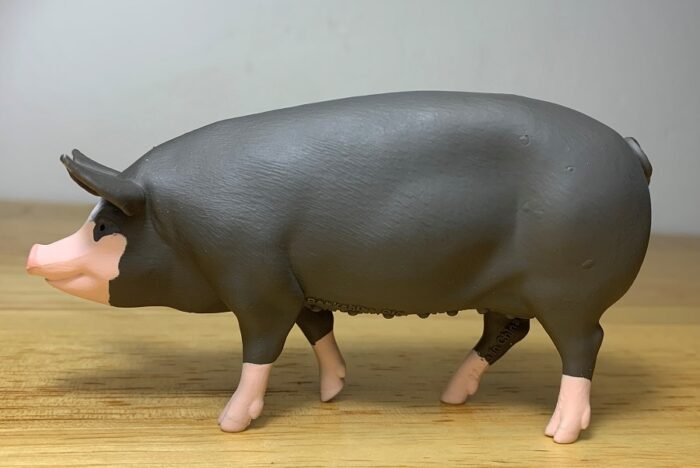The Berkshire pig (Sus scrofa domesticus) is an English breed that originates from county Berkshire. The breed dates back to the 1600’s and is said to be the breed fed upon by General Oliver Cromwell and his troops whilst camping in the Thames valley. Those Berkshires were quite different from the modern breed, however.
Author: Gwangi
 My name is Arthur but I go by Gwangi on the blogs and forums, as homage to the old dinosaur and monster movies I love so much. In addition to writing about and collecting toy animals (extinct and extant) I also share my home with a variety of living animals, mostly reptiles but a little bit of everything. I have a lifelong interest in all things pertaining to nature and natural history and most of my hobbies can be linked to those things in some way. I currently live in Maryland with my wife and daughter. In addition to writing on here I also write magazine articles, typically about local wildlife and aquarium fishes.
My name is Arthur but I go by Gwangi on the blogs and forums, as homage to the old dinosaur and monster movies I love so much. In addition to writing about and collecting toy animals (extinct and extant) I also share my home with a variety of living animals, mostly reptiles but a little bit of everything. I have a lifelong interest in all things pertaining to nature and natural history and most of my hobbies can be linked to those things in some way. I currently live in Maryland with my wife and daughter. In addition to writing on here I also write magazine articles, typically about local wildlife and aquarium fishes.All reviews by this author
Woodland Caribou (Wildlife by CollectA)

Everyone knows that Santa’s sleigh is pulled by reindeer (Rangifer tarandus) but with 14 extant sub-species currently described has anyone ever wondered what kind of reindeer are pulling it? Probably not. But according to the 1823 poem (which also gave the reindeer their names) A Visit from St.
Giant Squid (Monterey Bay Aquarium Collection by Safari Ltd.)

I must have been about 7-9 years old when I was first introduced to the giant squid (Architeuthis dux) via an episode of Arthur C. Clarke’s Mysterious World, which aired on the Discovery Channel during the 80’s and 90’s. The show was about unexplained phenomena and the episode in question was titled “Monsters of the Deep”.
Turkey (Red Rose Tea, Calendar Series VII, by Wade Ceramics)

It’s Thanksgiving this week in the United States, and as a result I feel once again compelled to review a turkey, as I did the year prior. Since I didn’t have a plastic turkey for review last year, I went with a plush one instead. Here it is a year later, and I have failed to acquire a turkey since then and now have to resort to whatever turkey I might have lying about.
Collared Peccary (Wild Safari North American Wildlife by Safari Ltd.)
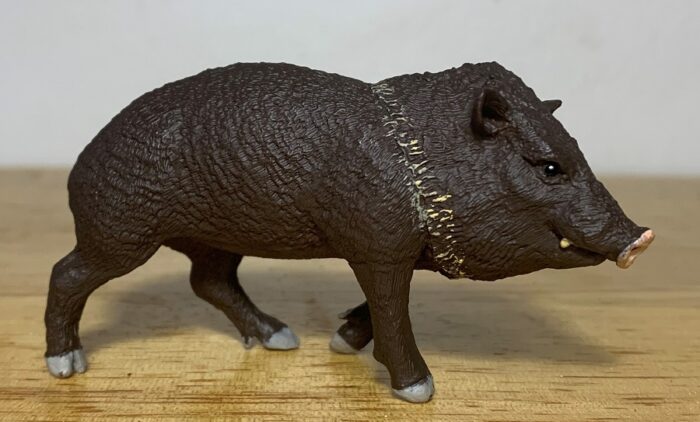
Although they look very much like pigs, and are sometimes called New World pigs, peccaries aka javelinas belong to their own distinct family, Tayassuidae. Pigs belong to the family Suidae and about 30 million years of evolution separates the two families that together make up the Suina clade. While all true pig species hail from the Old World, all extant peccary species come from the Americas, although the family originally evolved in Europe.
White Tiger (Wildlife Asia & Australia by Schleich)
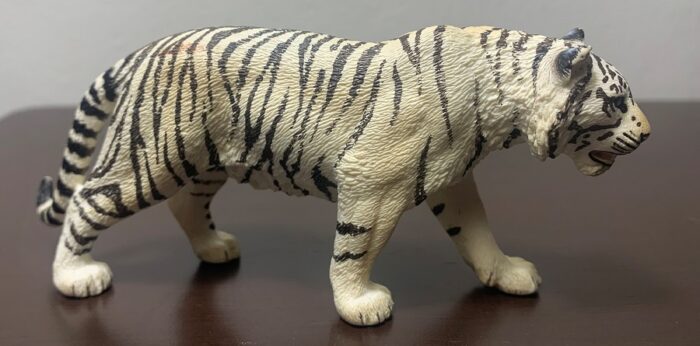
Contrary to popular belief, the white tiger is not its own unique species or sub-species of tiger. In fact, according to Luke Hunter’s Carnivores of the World, all captive white tigers are descended from one wild individual. That individual was a male cub captured in Madhya Pradesh, India, in 1951.
Common Raven (Wings of the World by Safari Ltd.)
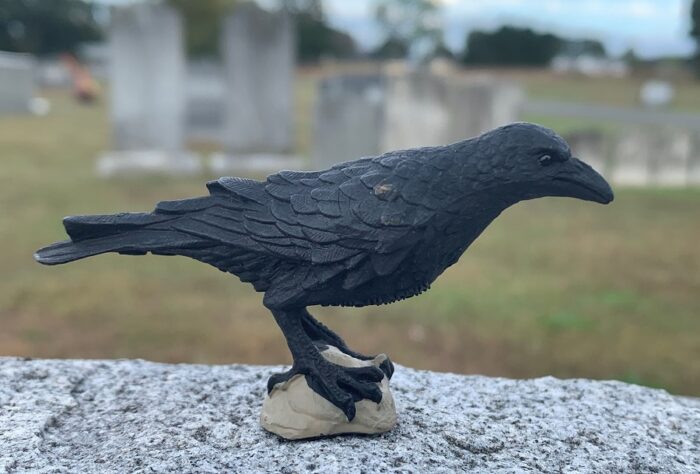
It’s Halloween and what better way to end our spooky season than by looking at one of its most symbolic animals, the common raven (Corvus corax). The common raven ranges around the northern hemisphere and lives in all the varied habitats therein. As a result, it also features in the varied mythologies, folklore, and religions from wherever it lives.
River Monster Collection (Toy Fish Factory)

Thalassophobia is defined as the fear of deep and vast bodies of water, and the unseen creatures that lurk in them. Even if you don’t suffer from this phobia, I dare any person to look out upon the surface of any large body of water and not wonder about what strange and potentially dangerous creatures lurk unseen under its surface.
Chain Kingsnake (Incredible Creatures by Safari Ltd.)

Continuing onwards with our look at creepy creatures all through October, I present to you… a snake. Snakes as a group are among the most feared and misunderstood creatures on the planet, two adjectives that often go hand-in-hand. As such, snakes are synonymous with Halloween and an obvious choice for review during spooky season.
Southern Bent-Wing Bat (Animals with Superpowers by Yowie Group)
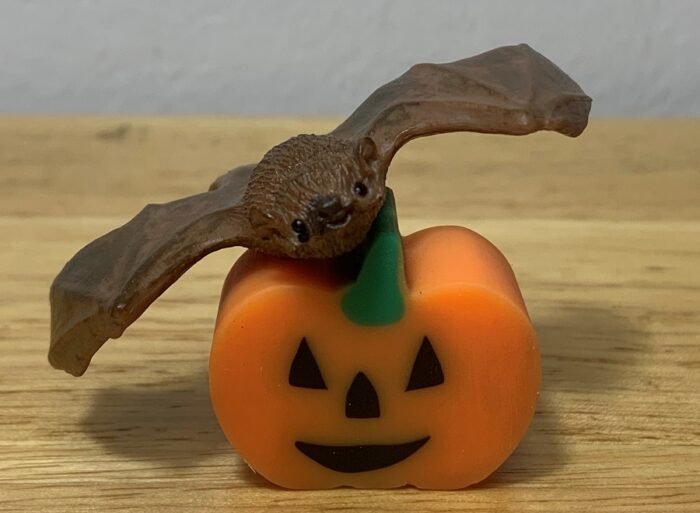
For most people Halloween is one day a year, for me and my family it represents a month-long celebration of all things spooky. So, for October I’ve decided to share some of that spookiness here with reviews of some classic creepy creatures. The sort of creatures that make most peoples skin crawl or are associated with bad omens and superstitions.
Przewalski’s Horse (Horse Country by CollectA)

Since its release in 2013 I’ve been eyeballing the CollectA Przewalski’s horse (pronounced shuh-VAL-skee and also known as the takhi) for my collection, even though I didn’t really collect extant animals at the time. What I was collecting were dinosaurs and other prehistoric animals, and recently extinct animals too. So why the interest in this horse?
Basking Shark (Sealife by CollectA)

Jaws author Peter Benchley once stated in an interview that “every young man in the world is fascinated with either sharks or dinosaurs”. In my case it was both, and really the natural world in general, but sharks and dinosaurs took special interest. So, it made sense that a few years after launching my dinosaur collecting career, I would dip my toes into extant animals and start collecting sharks.

